Ever since hitting the road 8+ years ago, it seems all my Christmas presents end up being chores. This year I got a set of Air Lift suspension air bags. I also got to install them on our Dodge. Since I’m a firm believer that having the right tools for the right job make any maintenance project much easier, we headed to Rene’s folks to do the install since her dad’s garage has it all.
I could have done this job anywhere, however, since I only needed a couple wrenches, an Allen key, and air compressor. But I wasn’t about to pass up on all the tamales and See’s candy that come with our traditional holiday visit with la familia.
The AIR LIFT 57295 LoadLifter 5000 Series Rear Air Spring Kit is exactly what it proclaims to be a “no drill” kit that can easily be installed within a couple hours. I took a bit longer than that so I could document the installation to help anyone else considering adding air bags to their Dodge Ram 2500 4WD pickup.
Air Bag Installation Photos
View all photos in this gallery of LoadLifter pics above, or read on for tips and details about how and why to install air bag suspension when hauling a fifth wheel trailer. Click thumbnails to view at full size.
Why Add Air Bag Suspension Springs?
We never noticed any issues with tire wear or handling when hauling our first Arctic Fox, a 24′ fifth wheel. After upgrading to our newer 27′ Arctic Fox 275-B, we noticed the truck bed often looked like it was sagging under the additional load. Even with the larger trailer, and added weight of our upgraded solar power system and new satellite internet dish, we are still well within our GVWR. But after discovering an odd wear pattern on our front truck tires, it was clear we needed some helper springs to level the load.
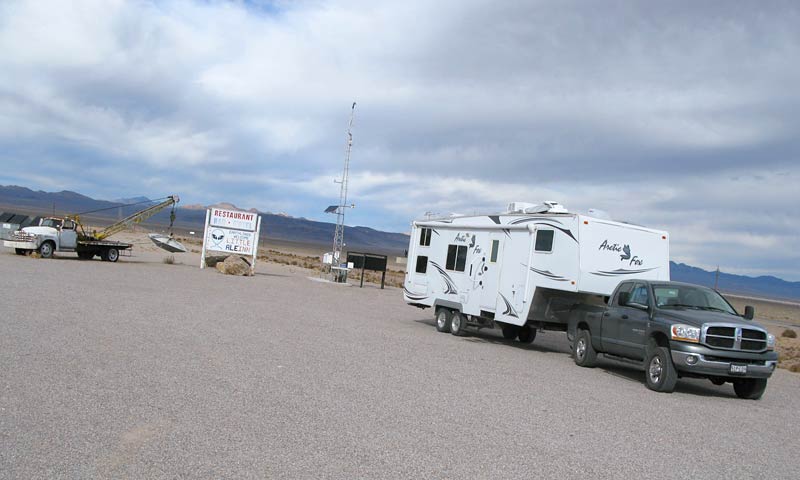
The additional weight on the hitch was causing the front of the truck to raise enough to create wear on the outer edge of the front tires. The LoadLifter air bags support up to 5,000 pounds of leveling capacity providing a smooth ride with even wear on all tires.
Which Kit is Best for My Truck and Fifth Wheel Hitch?
The first question I had when researching which air suspension springs are best for our truck was, will air bags fit my Dodge Ram 2500 with our Superglide fifth wheel hitch? The short answer is yes. But which ones?
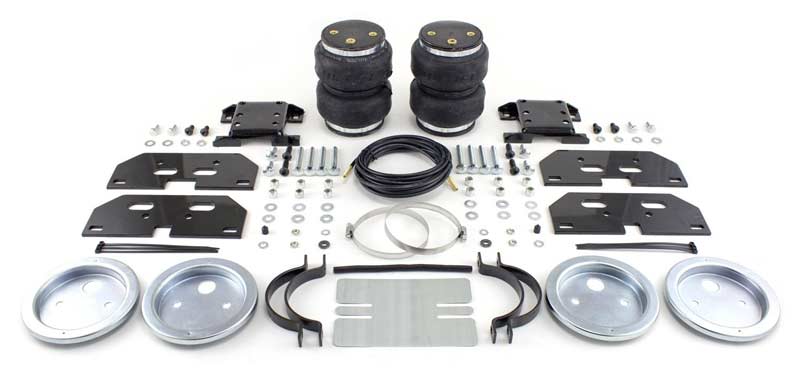
My best advice to save time, effort and money is to do your homework! I browsed Dodge forums and searched the Northwood RV Owners forum. I learned that Air Lift is the most popular brand of air springs. Since they make so many different models, however, I needed to make sure which bags would work with the fifth wheel hitch brackets on our truck frame. So I called PullRite. They informed me the LoadLifter 5000 Series would work,
and that the AIR LIFT 57295 was specifically designed to work with the Superglide fifth wheel hitch we have installed.
Save on LoadLifter Air Bags at Amazon!
How to Install LoadLifter Air Bags on Dodge Ram 2500 with Superglide Fifth Wheel Hitch
Installing the Air Lift 5000 suspension kit can be done by one person within a couple hours. Download LoadLifter 5000 Installation Manual here.
Follow these simple steps:
- Remove Jounce Bumpers
- Assemble Air Bags
- Mount Frame Brackets
- Attach Bags to Frame & Axle
- Attach Heat Shield to Muffler
- Install Air Lines & Test for Leaks
The only tools you will need include:
- Socket Wrenches
- Allen Wrench Set
- Screwdriver (Or Nutdriver)
- Drill (Optional, depending on location of air fill valve)
- Air Compressor
RELATED REVIEW: Use SmartAIR Auto-Level Air Bag System to auto-inflate air bags!
NOTE: I had ample room under our 4WD Dodge to complete the job, but you may wish to jack up your truck. If you do, be sure to set the jack stands as wide as possible on the axle or use lift points to avoid impeding upon the mounting bracket locations.
1. Remove Jounce Bumper
Locate and remove the jounce bumpers from each side of the rear axle. Each bumper is attached by two bolts. The bags will attach to the jounce bumper brackets.
These photos show the passenger side bumper in place, and the bracket once the bumper is removed.
2. Assemble Air Springs
The LoadLifter kit includes four roll plates, for use on 4WD trucks only. Since we have four wheel drive, I placed one of these round discs on top of an air bag, and then put one of the upper brackets on top of that and attached both to the bellows with the provided button head screws. The upper bellow bracket has the smaller notch in it than the upper frame btacket. Next, install the swivel air fitting into the top of the bag.
Turn the bellows over and put another roll plate in place, if applicable. Then attach the lower bracket, following the template in the manual indicating which holes to use for your vehicle. For our 4WD 2500, that would be the A-holes!
The bracket will fit on the air spring in an offset position. This offset should be on the side of the assembly with the air fitting.
Note: Be sure to insert the long carriage bolts into their holes on the lower bracket before attaching the bracket to the bellows. Two of them cannot be inserted once assembled.
3. Mount Upper Frame Brackets
With the provided button head screws, attach the upper brackets to the frame using the holes from the removed jounce bumpers.
4. Attach Air Springs to Axle
Set the assembly onto the axle with the swivel air fitting pointing inward toward the center of the truck. The carriage bolts should straddle the axle. Compress the air bag manually to expel enough air so you can swing the assembly upright until the upper brackets are flush.
Align the slots in the frame upper bracket and bellow upper bracket and attach them with provided bolts, washers and locking nuts. Push the top of the air spring forward or backward to align the brackets so they are parallel and the spring is upright.
NOTE: On the passenger side assembly, the outer carriage bolt should be between the brake line and axle. The inner carriage bolt should be outside the brake line and axle.
Attach the axle straps to the carriage bolts and repeat for the other side.
5. Attach Heat Shield to Exhaust Pipe
On the passenger side of the axle, the spring and air line are positioned close to the exhaust pipe. The LoadLifter 5000 kit comes with a heat shield to prevent damage to the air bag or air line at running temperature.
Bend the tabs on the heat shield to provide a space between the exhaust pipe and the heat shield. Then attach the heat shield to the exhaust pipe using the provided clamps and bend the heat shield for maximum clearance to the air spring.
5. Install Air Lines
Choose a convenient location for mounting the inflation valves. Popular locations for the inflation valve are:
- The wheel well flanges
- The license plate recess in bumper
- Under the gas cap access door
Depending on where you decide to install the valves, you may need to drill holes. I didn’t have to since I used two existing holes in the body of the wheel wells on our truck which were likely designed just for this purpose.
The air line provided comes as one piece with fill valves on each end. Cut the line in half, or at the desired lengths once you determine the location for each valve. Mount the valves and run lines using the provided zip ties, routing the air line along the frame to the air fitting on the air spring. Keep at least 6″ of clearance between the air line and heat sources. Secure the air line to fixed, non-moving points along the chassis avoiding any sharp edges or tight turns. Leave enough slack in the line to allow for any movement that might pull on the air line.
Make a straight cut on the air line with a razor, don’t use scissors. The swivel valve on the bellows have a compression fitting that you just insert the line into and seat it firmly. Before attaching the passenger side line, slide the protective sleeve on to offer additional shielding from heat near the exhaust pipe.
To check for leaks, inflate the bags to 30± lbs and apply a solution of soapy water to all fittings and check for bubbles. Reseat the line where necessary and check for any loss in pressure the next day.
NOTE: Air Lift offers optional compressor kits for inflating bags on demand. For now we’re happy monitoring the pressure of the bags and just filling them as needed whenever we top off the tires, or with a portable air compressor.
Any questions?
After having just hitched up and driven our first day with the LoadLifter 5000 air bags installed, I must say they made a vast improvement. Our truck no longer sags and it handles much better. Do you have air bags on your truck? Did you notice any difference? Do you like DIY tips and product reviews like this? Do you have any tips to share?

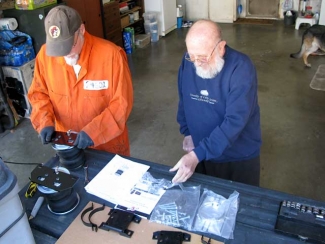
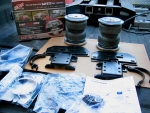
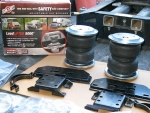
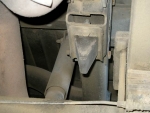
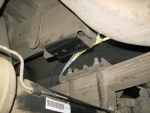
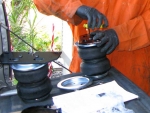
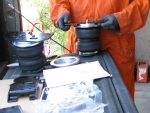
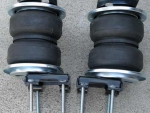
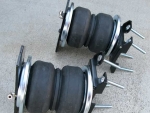
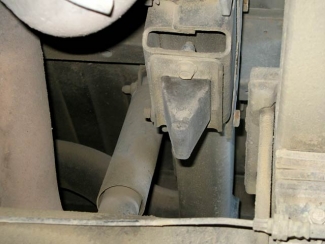
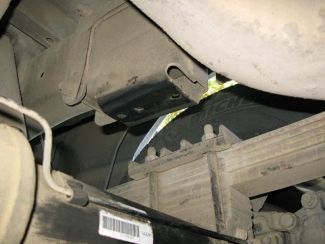
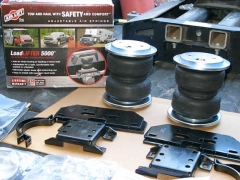
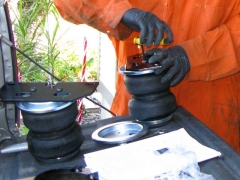
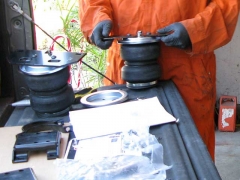
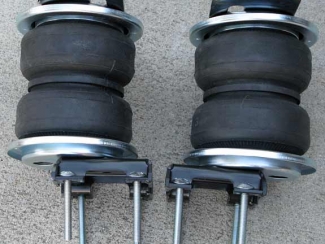
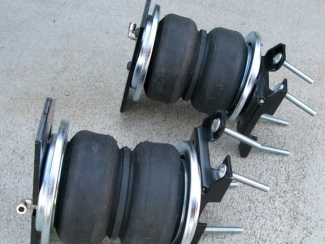
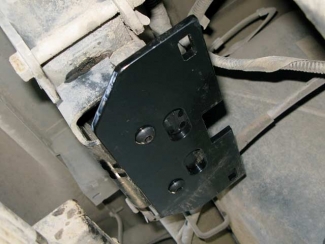
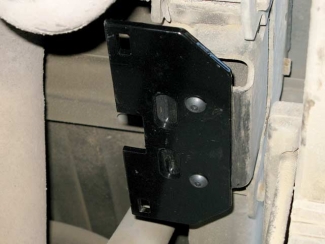
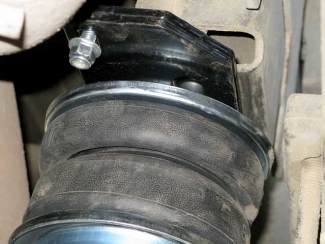
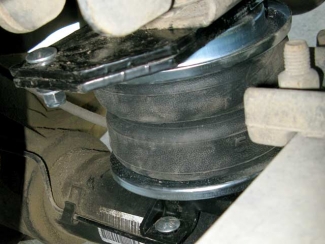
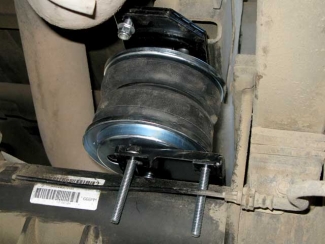
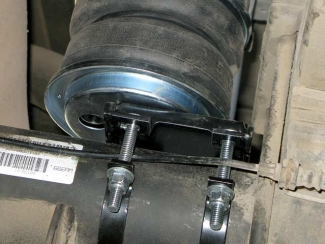

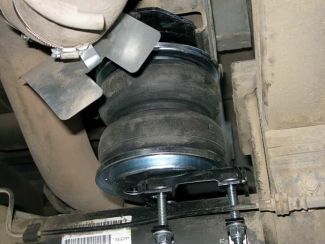

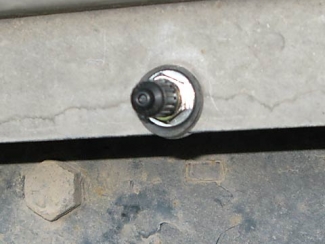

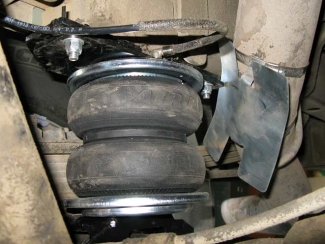
I clicked on the link to Winegard Internet and got How to Install Air Bags on a Dodge. WE have a Dodge and it is good info, but not what I was looking for. Getting ready to go full time in May and researching mobile internet options.
Thanks
I got a ram 5500 ,is possible install airbags,better cushion ?
Probably, if it doesn’t already have them. Check with Airlift or other manufacturers for system compatibility and availability.
Could you install air bags on fifth wheel trailer?
Sure, I’ve seen people use air suspension bags on the trailer axles, or for the hitch. Air Lift make many different Air Ride kits and components, you’ll just need to find (or modify) the hardware to fit your trailer.
I’m surprised that the airbags don’t “naturally” leak like they do on the Frieghtliner that I drive for a living. Of course, those bags are constantly inflated by the same on board compressor that operates the brakes. Have you ever weighed your truck and trailer and gotten the specific axle weights? And btw, are RVrs required to pull into DOT scales when they’re open? I can’t say I’ve ever seen one pull through. ?
Thanks for the comment Roger! I’ve been checking the AirLift bags periodically since installing them, and have not noticed any loss in air yet.
Yes, we’ve used the Escapees Smart Weigh program to get specific weights for all axles and are well withing our GVWR. And no, as far as I know, personal recreational vehicles are not required to enter roadside DOT weigh stations. I have read discussions arguing that fact for rigs over a certain size and/or if they are wrapped in commercial graphics. But we have never stopped in 8+ years, and I have no intention to do so.
Great article, thanks for taking the time to write it. Can you tell me how is the ride affected when you are *not* pulling your 5thWheel? Can the airbags inflation be adjusted to get a *better* ride when the truck is by itself, when compared to a truck without the airbags?
Great question. I did notice the ride was a little bit rougher with the bags fully inflated and not pulling the rig. the handling was not affected at all, we could just feel all bumps a bit harder. All we need to do is deflate the bags when not hitched up, but we didn’t do that since we were only driving a short distance before getting our trailer and hitting the road again.